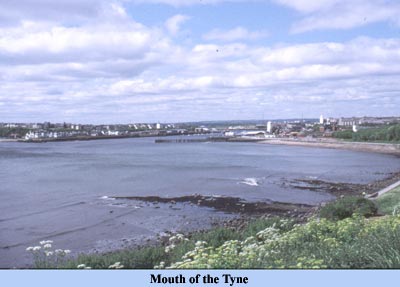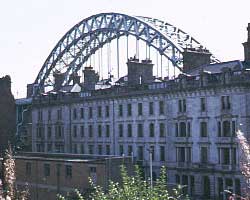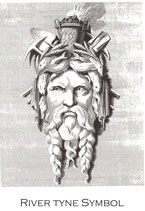
INTRODUCTION

"Everybody loves a bridge. They are essentially romantic objects - brave, adventurous, usually handsome or at least interesting to look at, often magnificently idiosyncratic and every single one of them a seperate individual with its own personality, pedigree and background, each time to be freshly encountered and enjoyed."
Bridges. Sir Hugh Casson. 1963
The bridges on the Tyne are many and varied. The river is first bridged some ten miles upstream from the river mouth at that point where the Tyne runs through a deep gorge and where the steepness of the river banks meant a steep descent and an equally steep climb up the opposite bank in former times. The High Level Bridge changed all that, being the first of the Tyne bridges to cross at at the same level as the roads and railways existing high up on the river banks. This was a necessity for the railway but proved equally invaluable for road users. Soon this new high level bridge was joined by others, only two of the present-day crossings being at riverside level, the Swing Bridge and the Gateshead Millennium Bridge. Further upstream the banks again levelled out and the bridges became correspondingly lower.
From Newburn west, the bridges were also smaller in scale and often built of stone. Further west as the river narrowed there were smaller bridges, and footbridges began to appear. The coming of the Newcastle and Carlisle Railway from 1835 required more new bridges and then with the building of railways up both the North and South Tyne valleys the bridge builders were again at work.
This website traces the present day bridges from mouth to source, with South and North Tyne covered seperately. The same pattern is used in the following sections which look at former bridges, at some of the proposals for bridges and tunnels which were never built, and lastly at some of the ferries at various points on the river and at the two tunnels which exist today.
The website begins its exploration of the Tyne's bridges from the river mouth and moves westwards. It is split into sections with the South and North Tyne also divided into sections. Then come pages about former bridges which no longer exist, then information on proposals which have (so far) not materialised and finally facts about some of the ferries and tunnels on the Tyne. Finally a list of references and links to other websites which may be of interest.

